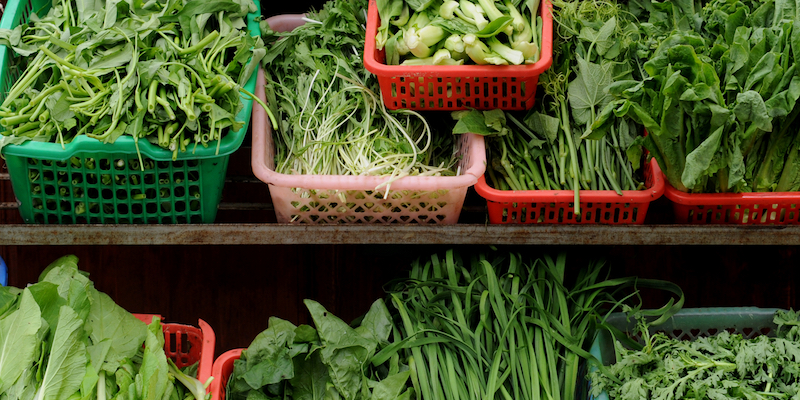Getting more Asian Greens into your diet
Living in Australia, we are lucky to have so many multicultural influences. This can be felt greatly when it comes to our culinary selection. In this post, we look at getting more Asian Greens into your diet and the great number of vegetables that aren’t traditionally used in Western cooking but can help create amazing fusion dishes. We’ll also share some dishes where you can truly appreciate the unique textures and flavours of Asian Greens.
Gai Lan aka Chinese Broccoli
Gai Lan is a dark-green vegetable with thick, glossy stalks large leaves and small yellow flower heads in the center. It’s slightly more bitter than broccoli but the stalks taste similar to that of broccoli stalks.
How to use it: Have it as a delicious vegetable side dish. Steam it and serve with oyster sauce or include it in a stir-fry (blanch the stalks first).
Bok Choy aka Chinese White Cabbage
Bok choy is sold in both baby and mature forms and nowadays is relatively easy to purchase in your standard grocery stores, not just the Asian grocery stores. Mature bok choy has white stems and dark-green leaves; baby bok choy is smaller and light-green in colour. This vegetable is a type of cabbage, in which both the leaf and stem is eaten.
How to use it: Makes a great addition to your favourite stir-fry, braise, soup or stew. When preparing, separate each of the stalks prior to cooking. Because of its delicate leaves and fragile stalks, bok choy cooks extremely quickly. If cooking bok choy in a wok, be sure to add it as the last ingredient to avoid overcooking it, which will cause the leaves to wilt.
Gai Choy aka Chinese Mustard Greens
Gai Choy is a large vegetable that is a dark yellowish-green colour. Usually the stems and leaves are ruffled and curly. It has a mustard, spicy “bite” to it. Red mustard’s flavour is reminiscent of wasabi.
How to use it: You’ll usually find it pickled, stir-fried, stewed or braised. It’s best if it’s blanched first if you want to remove some of the bitterness. But note, the strong flavour (and red colouring if it’s a red mustard leaf) can be lost if overcooked. Baby mustard greens work well in salads.
Ong Choy aka Water Spinach
This tall, leafy green has hollow stems and tender leaves with a mild, sweet flavour and slight nutty undertones.
How to use: Traditionally it’s stir-fried with a pungent shrimp paste in Chinese cooking, but can it can be used in much the same way that usual Spinach is used, although it does not wilt down as much and stays relatively crunchy. The hollow stems drink up cooking liquid. It’s best enjoyed in a soup, stir-fried or eaten raw in a salad.
Oriental Celery aka Chinese Celery
Chinese Celery is similar looking to that of traditional celery however it has much thinner stalks and usually has the leafy tops still attached. Its flavour and aroma can be likened to that of traditional celery but some also find it even more intense.
How to use it: Often added to stir-fries and soups, but usually for its flavour not its fibrous texture.
General Tips for Asian Greens
- When selecting, look for crisp stalks with bright green, glossy leaves. Make sure the leaves are not yellow in color, wilted or damaged.
- Store Asian greens as you would store other greens but for best flavour use within three days. Keep refrigerated until ready to use, or for no more than five days if needed. Once the leaves begin to brown in the refrigerator, make sure to use them the same day of discard.
